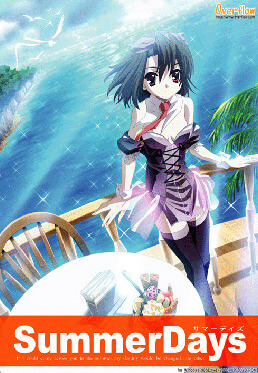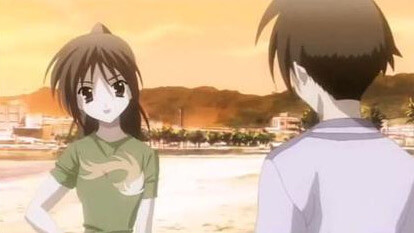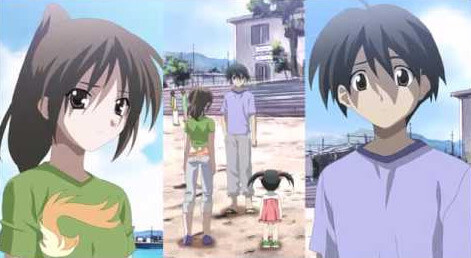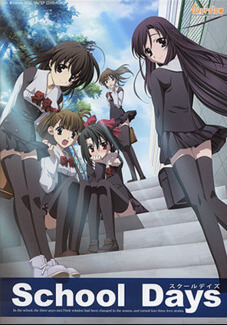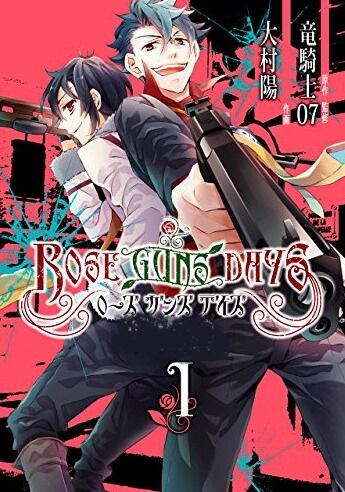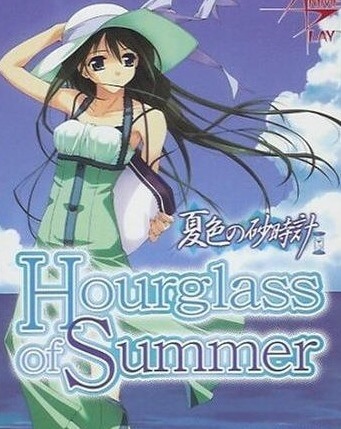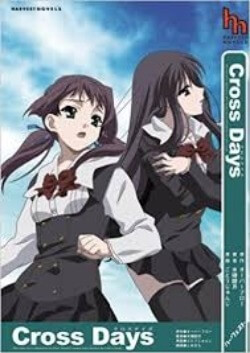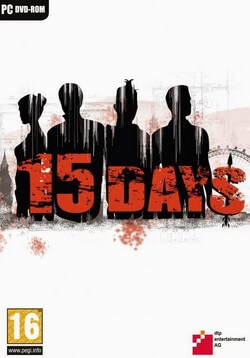As a visual novel, Summer Days contains extremely minimal gameplay. The game's core onscreen presentation is composed of scenes that are viewed from a mostly third-person perspective. At predetermined intervals, the game brakes, and players are presented with one to two responses or actions relevant to the scene in progress to make, or not make, on behalf of characters. Each selection branches the game's progress up that point in an alternate direction, while also causing the player's love toward a character to blossom, plateau, or diminish, thus providing for a nonlinear storytelling experience. As with its predecessor being an erotic title, relationships between characters may expectedly become sexual; scenes of this kind depict French kissing, masturbation, oral sex, anal sex, Sexual intercourse, nudity (both female and male) or combination of the five, and pixelized censors over genitals. Each route the game takes does invariably conclude at some point with an ending specific to it, thus, players who wish to watch additional endings, and notably aforementioned sex scenes, will have to play through the game more than once.
Much like the other games in the franchise, Summer Days is unusual in that instead of traditionally static characters with subtitled dialogue, it incorporates motion and voice, making it reminiscent of an animated series. Cinamatics naturally play on their own, and players are afforded the ability to pause, fast-forward, and even skip those they've seen before; sex scenes, additionally, become unlockable from the main menu as they are reached in the game. Progress can be saved at any time and loaded from either the main menu or during play.
Limited edition copies of Summer Days were also bundled with the standalone Flash mini-game Ahoge Battle (アホ毛 バトル, Ahoge Batoru), a whimsical take on School Days ending "The Bloody Conclusion". Choosing from three difficulties, the player controls Sekai, who attempts to fight off Kotonoha by pressing any two configurable keys in quick session. In the case of the highest difficulty, a third is also used. If the player is able to fend off their opponent long enough to fill their end of a progress bar, the game is won and a tally of how many times each key was pressed is recorded. If the player loses, they are given a chance to continue. In an identical fashion, limited edition copies of Shiny Days are expected to come bundled with Strip Battle Days (ストリップバトルデイズ, Sutorippu Batoru Deizu), a rock-paper-scissors mini-game based around the disrobing of female characters.
Plot
Setsuna Kiyoura is a high school student out of school for summer vacation, enjoying the break with family and peers. When her childhood friend Sekai is bedridden with mumps and unable to attend to her part-time waitressing job, Setsuna much to her chagrin, agrees to fill in for her. Though she finds the work almost thoroughly unpleasant, from the revealing uniforms to difficult customers, Setsuna manages to overcome the challenges of the job through the encouragement of friends, particularly that of Makoto Itōu, a classmate she likes.
Setting
Set in the same universe as School Days, Summer Days retells the story of the first game had it occurred during the midst of summer vacation instead of at school and from the perspective of another protagonist. The game takes place in a fictional, undisclosed prefecture of Japan that spans a range of cities, particularly a coastline called Haramihama, where the game's restaurant and center of activity, Radish, is established. As such Summer Days shares the same setting with a previous 0verflow game called Summer Radish Vaction!! as well as the same characters of Setsuna and Sekai's mothers.
Characters
Summer Days incorporates all but a few of the recognized cast from School Days while introducing a handful of characters that would become new to the franchise. The game focuses on the life of Setsuna Kiyoura, a character remembered for her impassive personality in School Days, repurposed as the thoroughly more open and emotional protagonist of its sequel. A first-year high school student out for summer vacation, Setsuna lives in the fictional city of Motehara with her mother Mai, a restaurateur who is frequently at work, and routinely visits Sekai Saionji, her childhood friend.
In spite of the resentment she develops for the job she later takes, Setsuna finds the restaurant a wonderful social outlet. Besides reacquainting with Sekai's mother Youko, the owner, and a couple of meddlesome co-workers, Noan and Oruha, Setsuna meets a handful of new and familiar people on the job. Her first acquaintance is with Kokoro Katsura, a cheerful pre-teen who regularly stops in before piano lessons, Itaru Itō, a contagiously sweet little girl visiting for the summer, and Itaru's older brother Makoto, a classmate whom Setsuna principally has a crush on.
Through Makoto, Setsuna is further introduced to Otome Kato, Makoto's best friend and a member of the school's women's basketball team, her younger sister Karen, a rambunctious antithesis with a comparatively larger bust, and Karen's friends Futaba and Kazuha Nijou, a pair of identical twins. Of the people Setsuna knows, Hikari Kuroda, a girl whose family owns a bakery known for its custard pie, and Ai Yamagata, a bespectacled and soft-spoken classmate, make occasional stopovers.
